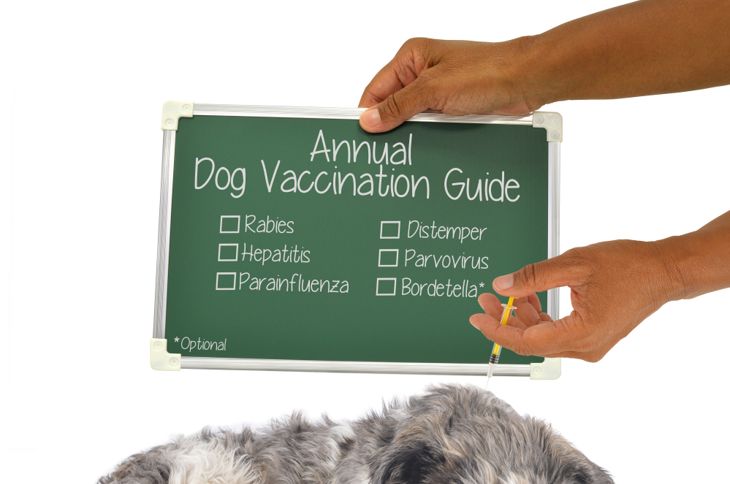If you’re a dog owner, you’ve probably heard of canine distemper before, but odds are you’ve never seen a case in person. This disease has become rare in areas where most dogs are routinely vaccinated, which is a good thing since it can cause serious and lifelong problems for dogs unlucky enough to catch it. Understanding the risks of canine distemper and taking steps to prevent it is an important part of keeping your dog healthy and happy.
What is Canine Distemper?
Canine distemper is a viral disease that is closely related to the measles virus that affects humans. This virus attacks a variety of internal systems in the dog’s body, including the gastrointestinal, respiratory, and nervous systems. This can lead to many serious problems, including trouble breathing and neurological issues. Distemper also affects some wild animal species, including foxes, coyotes, and skunks.
How is Distemper Spread?
The virus that causes distemper can be found in infected animals’ saliva and other bodily fluids, so contact with that is the primary way it is spread. This can happen through direct contacts, such as sharing food or water bowls, or airborne contact, if the infected animal sneezes or barks and sprays aerosolized drops in the air. Pregnant dogs with distemper can also spread it to their puppies through the placenta.
The Symptoms of Canine Distemper
The earliest symptoms of distemper tend to be discharged from the eyes and nose. A fever usually develops three to six days after exposure, and the dogs may become lethargic and lose their appetites. Coughing, vomiting, and diarrhea are also common. Some dogs also develop hard, often painful callouses on their paws. When the disease progresses to the second stage, the virus begins to attack the dog’s nervous system. This causes a tell-tale head tilt and a tendency to walk in circles that are commonly associated with distemper. Other common neurological symptoms include uncontrollable muscle twitches, seizures, paralysis, and unusual eye movements.
Diagnosing Distemper in Dogs
There is no single test used to diagnose distemper in dogs. A veterinarian will ask about the dog’s history, look at the symptoms, and run some tests for conditions often associated with distemper. These are usually enough to get an accurate diagnosis. If the dog passes away, the veterinarian may order post-mortem tests of the dog’s brain and nerve tissue to confirm the diagnosis.
Treating Canine Distemper
Unfortunately, there is no way to cure canine distemper. Instead, the typical treatment is to provide supportive care to the dog while the dog’s immune system fights off the virus. This typically includes intravenous fluids to provide nutrition and prevent dehydration, along with medications to reduce pain, vomiting, and other symptoms.
Common Complications
The damage caused by the canine distemper virus often puts the dog at risk of bacterial infections. Gastrointestinal infections are the most common, but respiratory and other infections may also occur. Part of treating canine distemper involves monitoring for these infections and treating them if they occur. Some veterinarians prescribe antibiotics as a preventative measure to help ward off these opportunistic infections.
The Prognosis
Canine distemper is fatal to many dogs, even with prompt veterinary treatment. The dog’s chances of recovery depend on many factors, including age, general health, and immune system strength. Some dogs may make a full recovery in as little as ten days, while others may battle the disease for weeks. Even dogs who survive may have lifelong problems due to the damage done to the internal organs. Neurological symptoms, such as head tilting and muscle twitching, are the most common lifelong problems associated with distemper.
Can Distemper Be Prevented?
Fortunately, there are vaccines available that are highly effective at preventing distemper. The canine distemper vaccine is considered a core vaccine, which means that veterinarians recommend that all dogs receive it as puppies and continue to receive booster shots throughout their lives. Dogs who do catch the distemper virus also should be quarantined from other animals and not allowed to share bowls, blankets, or other items with healthy dogs.
What Dogs are at Risk of Getting Distemper?
Young dogs and adolescent dogs are the most likely to get canine distemper if they are not vaccinated against it. Unvaccinated older dogs can still get it, but often the disease is less serious for them. However, elderly dogs or dogs with weakened immune systems may die if they catch distemper. Puppies require a series of booster shots before their vaccination is fully effective, so be careful socializing young puppies until that series is finished. Unvaccinated puppies should generally be kept out of dog parks and other areas with a lot of unfamiliar dogs.
Is Distemper Dangerous To Humans?
Although distemper is closely related to the measles virus, which is dangerous to humans, people cannot catch canine distemper. However, canine distemper can be spread between dogs and ferrets, so if you have pet ferrets and pet dogs, you should take particular care to make sure all of your animals are vaccinated against it.

 Home
Home Health
Health Diet & Nutrition
Diet & Nutrition Living Well
Living Well More
More




















